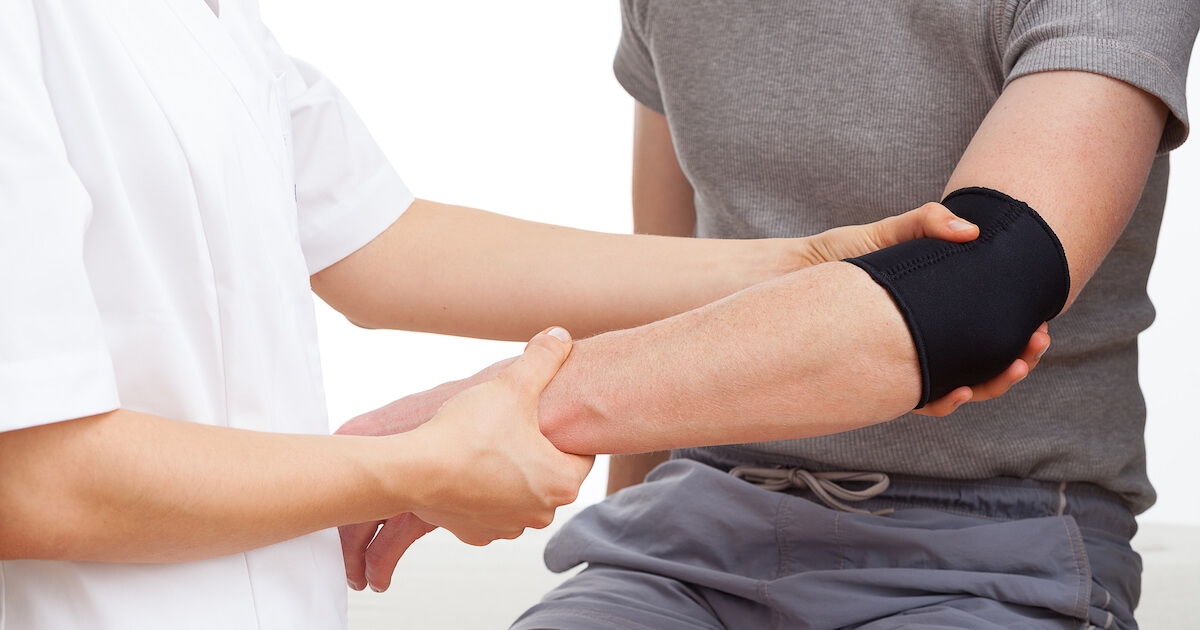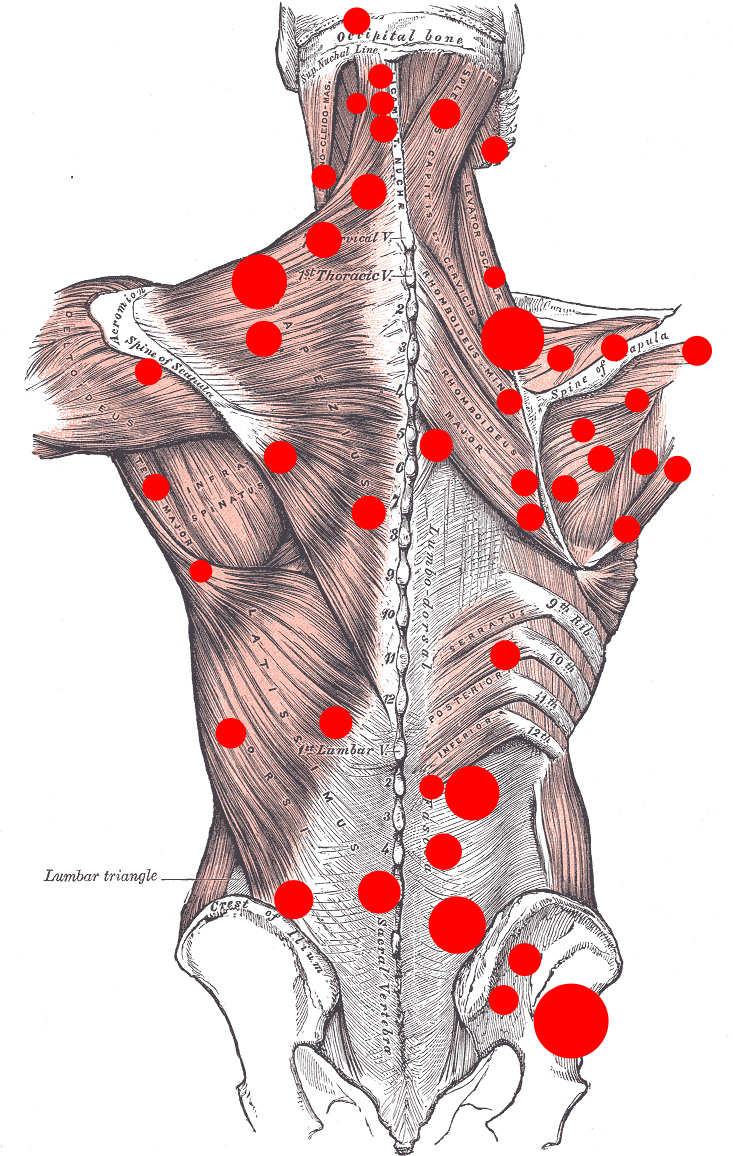Tag Archive for: Physiotherapy
What Is Tennis Elbow? and What Causes It?
Tennis elbow (technically known as lateral epicondylitis) is a form of tendonitis that results from inflammation and small tears in the tendon connecting your elbow joint to your forearm muscles. Tennis elbow pain is typically felt at the outer elbow and along the forearm, with symptoms that become more pronounced when the affected tendons and muscles are activated (by raising or straightening your wrist and hand, for example). Fortunately, it’s a condition that is relatively easy to remedy, with non-invasive tennis elbow treatment options that relieve pain and repair injury.
Signs & Symptoms of Tennis Elbow
The most common signs and symptoms of tennis elbow include:
- Weakness and pain typically affecting one arm but can affect both arms, depending on the aggravating activity (e.g., weightlifting where wrists and forearms and subjected to repetitive strain from pulling and weight-bearing movements).
- Aching or burning pain that typically starts at the bony prominence of your outer elbow
- Pain can sometimes extend from your outer elbow up through your forearm to the back of your hand.
- Pain can worsen at night or when using the affected arm to hold tools, weights, or other sports equipment.
- Sudden or worsening grip strength.
- Pain or discomfort when shaking hands, gripping items, turning doorknobs, holding a hammer or coffee mug, or lifting and straightening your wrist.
Tennis Elbow Risks & Contributing Factors
The common name used to describe lateral epicondylitis (tennis elbow) can be deceiving. While it is a common condition amongst athletes, anyone can suffer from tennis elbow, especially if your occupation or recreational activities involve repetitive lifting and extension of the hand or bending of the elbow.
A few examples of activities and contributing factors that can cause tennis elbow include:
- Age: most commonly experienced by adults between the age of 30-50
- Racquet sports (tennis, badminton, squash, ping-pong)
- Lacrosse
- Weightlifting/Olympic weightlifting and CrossFit
- Typing
- Using wrenches, hammers, and other tools (plumbers, construction workers, mechanics, stonemasons, painters)
- Laser technicians
- Chefs, butchers, and line cooks
- Violin playing
- Golfing
In rare cases, tennis elbow pain can occur without any apparent cause. Regardless of the cause, discomfort indicates that it’s time to seek tennis elbow treatment before the condition progresses.
Effective Tennis Elbow Treatment in Victoria, B.C.

In a significant majority of cases, the good news is that tennis elbow pain can be effectively resolved with non-invasive treatments. Effective tennis elbow treatment sometimes only requires physiotherapy, and in other cases, a tailored combination of targeted therapies, including:
- Physiotherapy
- Kinesiology
- Shockwave Therapy
- Chiropractic Care
- Acupuncture
- Ultrasound
- Cold Laser
- eToims
- A holistic approach to treatment
Never Ignore Pain
Pain indicates that it’s time to seek treatment. Sudden or worsening pain or discomfort is your body’s way of telling you that something is amiss and requires correction. While most tennis elbow cases aren’t serious, subjecting the affected area to continual strain could result in nerve compression and significant damage to muscles and tendons requiring surgery if left unaddressed.
Because various contributing factors can cause conditions such as tennis elbow, we take a comprehensive approach to providing tennis elbow treatment at Diversified Health Clinic. The first step is to book an appointment with one of our physiotherapists. When we meet with you, we’ll start with a thorough initial consultation and assessment before tailoring a treatment plan for you that relieves pain while specifically addressing your condition. We’ll also show you specific stretches and exercises you can continue at home to aid your recovery and maintain your results. Our goal is to help you return the activities you love and enjoy without the interference of pain or risk of injury.
Things You Can Do to Help Prevent Tennis Elbow Before and After Tennis Elbow Treatment
- Rest: after assessing your condition, our physiotherapist will be able to recommend how much rest your affected elbow needs before returning to your usual activities.
- Correction: our physiotherapist and kinesiologist will assess your postural and movement patterns and correct any dynamics that contributed to your pain and condition.
- Stretching and Conditioning: Treating and preventing the recurrence of joint, tendon, nerve, and muscle pain often includes stretches and exercises that strengthen stabilizing muscles to protect from further injury.
- Support: In cases where strain cannot be avoided, wraps and sleeves may be recommended as part of your tennis elbow treatment plan.
- Anti-inflammatories: While pain should never be ignored, in the interim, over the counter anti-inflammatories such as ibuprofen may be taken to help temporarily relieve pain and reduce inflammation.
If You Suffer From the Symptoms of Tennis Elbow:
Give our team of practitioners at Diversified Health Clinic a call today at (250) 382-0018 or book an appointment online. We’re happy to help answer your questions, address the cause of your pain and discomfort, and get you on the road to recovery.
 Spirit is our newest practitioner to join the Diversified Health Team. He completed his Masters of Physical Therapy at the University of Alberta in Edmonton, after finishing his Bachelor of Kinesiology at the University Victoria.
Spirit is our newest practitioner to join the Diversified Health Team. He completed his Masters of Physical Therapy at the University of Alberta in Edmonton, after finishing his Bachelor of Kinesiology at the University Victoria.
Physiotherapy is a clinical health science and profession that aims to rehabilitate and assists people to restore, maintain and maximize their strength, function, movement, and overall well-being by using natural methods such as exercise, manipulation, adapted equipment and modalities.
Spirit’s treatments combine home exercise plans, hands-on techniques, and the use of multiple cutting edge modalities, which assist his patients to improve their neuromyofascial function, and get them back to their daily routines as soon as possible.
One of these modalities used is spinal decompression. Spinal decompression is the therapeutic elongation of the spine in a slow, gentle manner in order to relieve pressure on compressed vertebrae and discs. This treatment is appropriate for those individuals who have low back pain that is caused by herniated discs or degenerated discs. Spinal decompression is combined with other types of physiotherapy such as active exercises and manual therapy.
Shockwave Therapy is another non-surgical treatment of soft tissue, bone, and joint pain that is regularly used at Diversified Health. The practitioner applies a conductive gel and moves the hand piece in a circular motion over the treatment area. Shockwave Therapy sends high-energy mechanical pulses to stimulate the breakdown of scar tissue and improve blood circulation in the area. These pulses also initiate metabolic activity and an inflammatory response that promotes and stimulates healing.
Spirit is pursuing ongoing training through the Orthopaedic Manual Therapy division, as well as acupuncture and dry needling to implement these techniques into his clinical practice.
We are excited to showcase the value of physiotherapy and how it can help you get back to being active, and doing what you love. Whether that’s going for a leisurely walk, playing with your children at the park, or mountain biking through the trails, the possibilities of what you could be doing are limitless.
Every day physiotherapists enhance the lives of British Columbians. As highly trained medical professionals, they offer innovative treatments, and programs that empower their patients to live healthier, more active lives. And…you don’t need a doctor’s referral to see one!
Get inspired to take action. See the difference physiotherapy can make.
Physio exercises to help improve range of movement at the knee and strengthen the quads.
This video is presented by qualified Chartered Physiotherapists Steph Davies and Louise Aylwin at www.physioexerciselibrary.com
For more information about knee exercises, please contact our physiotherapists Nicole Logan or Shadie Fleifel.
Welcome to our video series hosted by Shadi Flefeil where he discusses stretching and strengthening your body. This time we’re discussing caring for your shoulders & rotator cuffs.
Shadi Fleifel is a member of the Diversified Health Physiotherapy Team. He graduated with a bachelor’s degree in Kinesiology at Western University in London Ontario, before going to Perth, Australia to complete his Master’s degree in Physiotherapy in 2008. Please contact us at 250-382-0018.
 Physiotherapists, Shadie Fleifel & Nicole Logan demonstrate exercises that can help you properly use your shoulder to minimize over use of the rotator cuff. Exercises can improve strength and flexibility of related muscles and tendons.
Physiotherapists, Shadie Fleifel & Nicole Logan demonstrate exercises that can help you properly use your shoulder to minimize over use of the rotator cuff. Exercises can improve strength and flexibility of related muscles and tendons.
For more information, please contact us at 250-382-0018.
Scalene muscles can become tight from excessive sitting and computer work; by stretching this muscle group you will increase your range of motion and reduce the feeling of tightness and pain.
 Myofascial pain syndrome is a chronic musculoskeletal pain disorder that can involve either a single muscle or a muscle group. It refers to pain and inflammation in the body’s soft tissues. Myofascial pain is a chronic condition that affects the fascia (connective tissue that covers the muscles).
Myofascial pain syndrome is a chronic musculoskeletal pain disorder that can involve either a single muscle or a muscle group. It refers to pain and inflammation in the body’s soft tissues. Myofascial pain is a chronic condition that affects the fascia (connective tissue that covers the muscles).
The pain associated with this condition can range from burning, stabbing, aching sensations to include a combination of these symptoms. With myofascial pain syndrome, excessive strain on a particular muscle, muscle group, ligament or tendon can prompt the development of a “trigger point” that, in turn, causes pain.
Where a person experiences the pain may not be where the myofascial pain generator is located. This is known as referred pain. Myofascial pain symptoms usually involve muscle pain with specific “trigger” points which can be made worse with activity.
What causes myofascial pain & what are the symptoms?
Myofascial pain typically occurs after a muscle has been contracted repetitively. This can be caused by repetitive motions, injury to an intervertebral disc, or lack of activity (such as a broken leg).
The main symptom of myofascial pain is ongoing muscle pain, in areas such as the low back, neck, shoulders, and chest. These symptoms may include a muscle that is sensitive or tender when touched, or a pain that feels aching, burning, stinging, or stabbing and does not lessen in intensity. Another symptom is reduced range of motion in the affected area and a feeling of weakness in the affected muscle.
How is myofascial pain diagnosed?
Trigger points can be identified by pain produced upon digital palpation (applying pressure with one to three fingers and the thumb). In the diagnosis of myofascial pain syndrome, four types of trigger points can be distinguished:
- An active trigger point is an area of extreme tenderness that usually lies within the skeletal muscle and which is associated with a local or regional pain.
- A latent trigger point is a dormant (inactive) area that has the potential to act like a trigger point.
- A secondary trigger point is a highly irritable spot in a muscle that can become active due to a trigger point and muscular overload in another muscle.
- A satellite myofascial point is a highly irritable spot in a muscle that becomes inactive because the muscle is in the region of another trigger pain.
How is myofascial pain treated?
Treatments may include any of the following:
- Massage Therapy
- Physiotherapy
- Lifestyle changes -adjusting your workstation, improving posture, avoiding muscle tension
- IMS | Trigger point dry needling
- Transcutaneous electrical nerve stimulation | TENS
- Laser
- Ultrasound
Often a combination of physical therapy, trigger point dry needling and massage are needed in chronic cases. Please talk with one of our health care practitioners to discuss myofascial pain syndrome.
News & Events
- About Matthew Bryan, DC November 7, 2025
- The Benefits of Shockwave Therapy Treatments February 28, 2023
- Piriformis Syndrome: A Real Pain in the Butt January 31, 2023
- Searching for a Personal Trainer in Victoria to Help You Achieve Your Goals? December 31, 2022
Diversified Health Clinic
| Thursday | 8 a.m. – 6 p.m. |
| Friday | 8 a.m. – 6 p.m. |
| Saturday | 8 a.m. – 5 p.m. |
| Sunday | Closed |
| Monday | 8 a.m. – 5 p.m. |
| Tuesday | 8 a.m. – 6 p.m. |
| Wedensday | 8 a.m. – 6 p.m.. |




